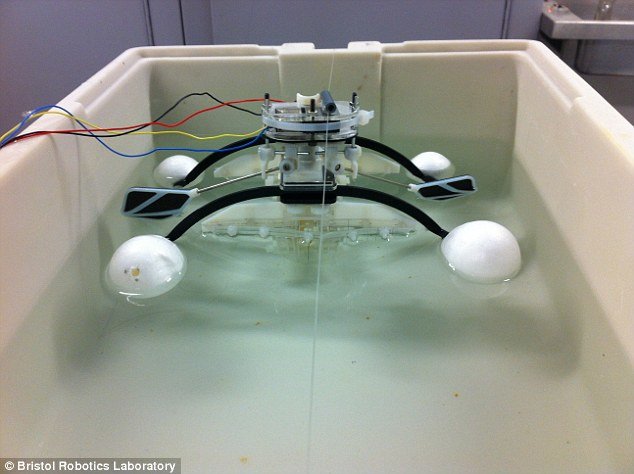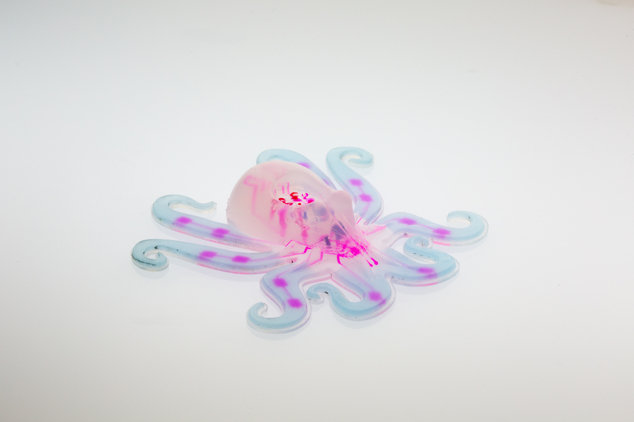
Robotics experts has developed a soft robot capable of consuming organic material for energy, effectively creating a machine which digests living things.
The hope is that such self-sustaining robo-scavengers could be used to mop up contaminated water or algal blooms, which choke out life.
Developed by a team of engineers based in Bristol, the machine is able to gain the energy it needs to keep it 'alive' from its watery surrounding.
According to New Scientist, the design imitates basic marine creatures called salps, simple, transparent tube-like creatures which filter the water for living scraps.
Using a soft polymer membrane as a 'mouth', the machine filters its aquatic surroundings - a water bath with added biomatter - to gain the energy it needs.
But unlike the stomach or digestive tract of living organisms, the mechanical imitator relies on a microbial fuel cell packed with bacteria which break down organic matter.
These microbes break liberate the chemical energy stored in the biomatter, which is transformed into electrical energy which the robot can use.
The clever design imitates the symbiotic relationships which have helped living things to dominate the planet over billions of years.
Once the matter is used up, it is excreted out the other end and the robot moves on.
New Scientist's Timothy Revell reports that the energy gained from the process is currently limited, but the soft design of the machine has enabled the team to drastically cut the amount of energy it requires.
What's more, the team was able to link multiple fuel cells in series to boost the energy output.
Getting the balance right means such soft robots can eke out a living with relatively little 'food', so could be pretty much self-sustaining.
Earlier this year, researchers in the US created a 3D-printed octopus robot called the Octobot.

A team at Harvard University created the robot — actually about 300 of them, since they are so cheap to make.
The idea is to make this something that is powered by a chemical reaction in fluids; fluid movement moves the arms and directs the robot's actions.



The next step will be named "grey goo". Apparently it will be designed to be self replicating pollutant remover.